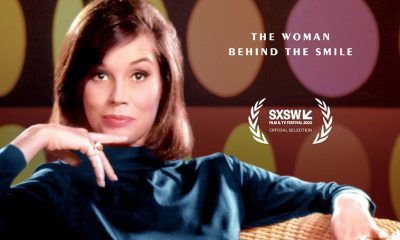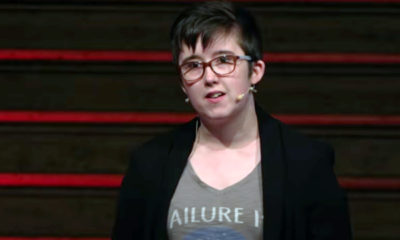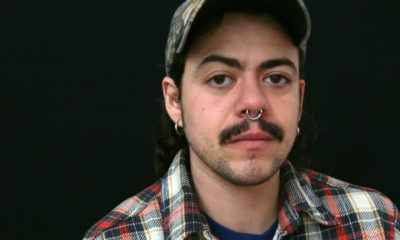Arts & Entertainment
Remembering the queer voices and allies we lost in 2019
Authors, artists and others who changed the world
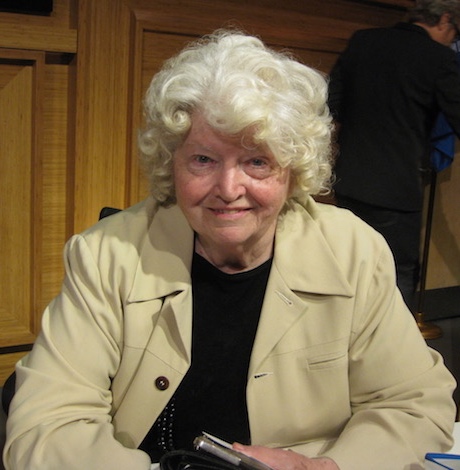
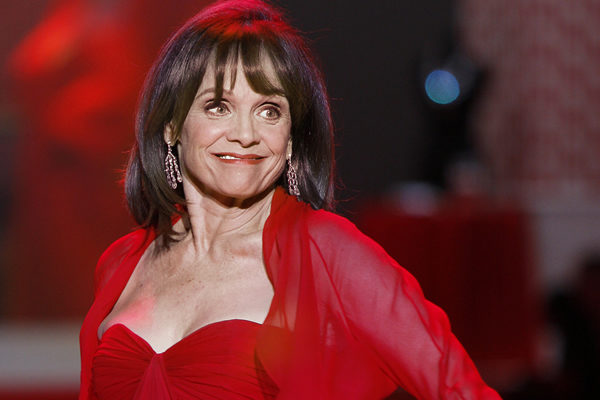
Many acclaimed LGBTQ people and allies died in 2019. They include:
Carol Channing, the legendary Broadway actress, died on Jan. 15 at age 97 in Rancho Mirage, Calif. She was best know for her performances as Lorelei Lee in “Gentlemen Prefer Blondes” and Dolly Gallagher Levi in “Hello Dolly!”
Mary Oliver, a lesbian poet, died on Jan. 17 at her Florida home at age 83. Her collection “American Primitive, won the 1984 Pulitzer Prize.
Harris Wofford, a Democratic senator and civil rights crusader, died on Jan. 21 at age 92. After his wife died, Wofford fell in love with Matthew Charlton. They married in 2018.
Barbra Siperstein, a transgender rights crusader died on Feb. 3 at age 76 from cancer at a New Brunswick, N.J. hospital. A New Jersey law bears her name. It permits people in New Jersey to change their gender on their birth certificates without having to prove they’ve had surgery.
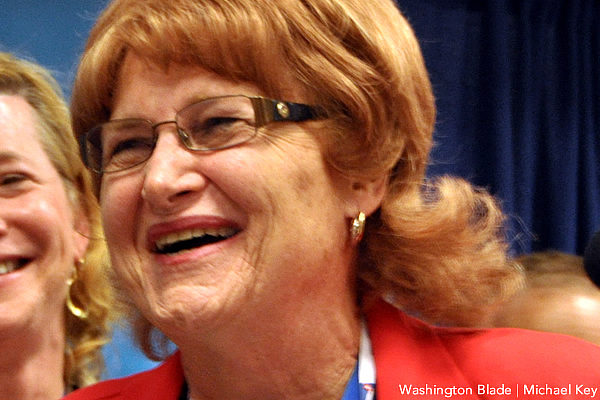
Patricia Nell Warren, author of the 1974 novel “The Front Runner” died on Feb. 9 at age 82 in Santa Monica, Calif. from lung cancer. The iconic book was one of the first to feature an open same-sex male relationship.
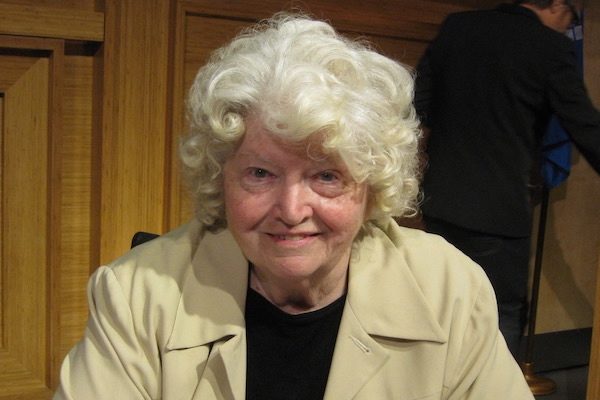
Hilde Zadek, a Vienna State Opera mainstay, died on Feb. 21 at 101 in Karlsruhe, Germany. She debuted in the title role of in Verdi’s “Aida” in 1947. She retired in 1971.
Jackie Shane, a black transgender soul singer who received a 2018 Grammy nomination for best historical album for her album “Any Other Way,” died at age 78 in Nashville. Her body was found at her home on Feb. 21.
Gillian Freeman, the British novelist who wrote the 1961 novel “The Leather Boys” died on Feb. 23 at age 89 in London. The book was one of the first to portray working-class gay characters.
Carrie Ann Lucas, a queer lawyer and disability rights advocate, died on Feb. 24 at age 47 in Loveland, Colo. She championed the rights of disabled parents.
John Richardson, an art historian renowned for his four-volume biography of Pablo Picasso, died at age 95 on March 12 at his Manhattan home.
Barbara Hammer, a lesbian filmmaker, died at age 79 from ovarian cancer at her partner Florrie Burke’s home in Manhattan on March 16. Hammer celebrated lesbian sexuality in “Dyketactics” and other films.
Dr. Richard Green, a psychiatrist, died at age 82 on April 6 at his London home. He was one of the first to critique the idea that being queer is a psychiatric disorder.
Michael Fesco, the nightclub owner who provided open spaces (Ice Palace, Flamingo and other venues) for gay men to dance when LGBTQ people couldn’t be out, died on April 12 at age 84 in Palm Springs, Calif.
Lyra McKee, a 29-year-old, queer Northern Ireland journalist, died on April 18. She was killed while covering violence in Londonderry.
Giuliano Bugialli, a gay culinary historian and three-time James Beard Award winner, died at age 88 on April 26 in Viareggio, Italy.
Doris Day, queer icon, actress and singer best known for her romantic comedies with Rock Hudson, died at age 97 on May 13 at her Carmel Valley, Calif. home from pneumonia.
Binyavanga Wainaina, a Kenyan author, founder of the magazine “Kwani?” and one of the first prominent African writers to come out as gay, died at age 48 on May 21 in a Nairobi hospital.
Charles A. Reich, author of the 1970 counter-culture manifesto “The Greening of America,” died on June 15 at age 91 in San Francisco.
Douglas Crimp, an art critic and AIDS activist, died on July 5 at age 74 at his Manhattan home from multiple myeloma. He wrote many articles for journals. Yet he also attended meetings of the AIDS group ACT UP.
Elka Gilmore, a queer chef known for her fusion cuisine, died at age 59 on July 6 in San Francisco. The New York Times Magazine called her “the enfant terrible of the modern California kitchen.”
George Hodgman, a gay editor, died on July 19 at age 60 at his Manhattan home. The cause was thought to be suicide. Hodgman’s memoir “Bettyville” is his story of staying in Paris, Mo. with his widowed mother who had dementia.
Lee Bennett Hopkins, a gay poet who wrote and edited many books for children, died on Aug. 8 at age 81 in Cape Coral, Fla. In 2018, he edited “World Make Way: New Poems Inspired by Art from The Metropolitan Museum.”
Sally Floyd, one of the inventors of Random Early Detection (RED), a widely used internet algorithm, died at age 69 on Aug. 25 at her Berkeley, Calif. home from cancer. She is survived by her wife Carole Leita.
Valerie Harper, the actress best known as Rhoda Morgenstern on “The Mary Tyler Moore Show,” died on Aug. 30 at age 80 from cancer. Harper was D.C.’s 2009 Capital Pride Parade grand marshal.
Rip Taylor, a gay comedian known as The King of Confetti, died on Oct. 6 at age 88 at Cedars-Sinai Medical Center in Los Angeles.
John Giorno, a gay artist, died on Oct. 11 at his home in Manhattan at age 82. In 1969, he founded Dial-A-Poem, a communications system enabling people to hear Allen Ginsberg and other poets read their poems.
Gillian Jagger, an artist whose work (installations of animal carcasses and tree trunks) wasn’t aligned with any one movement, died on Oct. 21 in Ellenville, N.Y. at age 88. “I felt that nature held the truth I wanted,” she told the U.K’s Public Monuments and Sculpture Association magazine. She is survived by her wife Connie Mander.
Howard Cruse, a gay cartoonist whose comic strip “Wendel” ran in The Advocate for several years, died on Nov. 26 at age 75 in Pittsfield, Mass. from lymphoma. His graphic novel “Stuck Rubber Baby” and other work influenced other queer cartoonists. He is survived by his husband Ed Sedarbaum.
Michael Howard, a gay military historian and decorated combat veteran and pioneer of the “English school” of strategic studies, died on Nov. 30 in Swindon, England at age 97.
Shelley Morrison, who played Rosario on “Will and Grace” from 1999 to 2006, died on Dec. 1 in Los Angeles at age 83 from heart failure.
William Luce, who wrote the acclaimed plays “The Belle of Amherst” about Emily Dickinson and “Barrymore” about John Barrymore, died on Dec. 9 at a memory-care facility in Green Valley, Ariz. at age 88. Ray Lewis, his partner of 50 years, died in 2001.
Books
Chronicling disastrous effects of ‘conversion therapy’
New book uncovers horror, unexpected humor of discredited practice
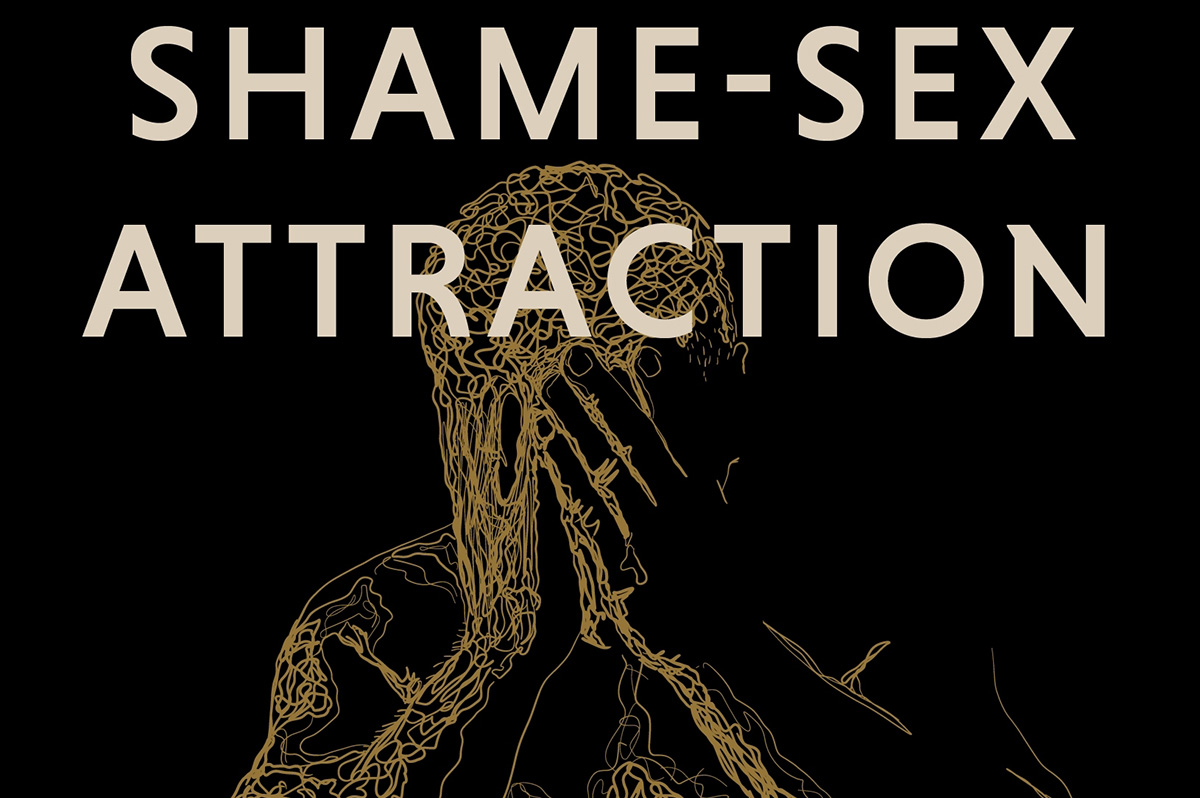
‘Shame-Sex Attraction: Survivors’ Stories of Conversion Therapy’
By Lucas F. W. Wilson
c.2025, Jessica Kingsley Publishers
$21.95/190 pages
You’re a few months in, and it hasn’t gotten any easier.
You made your New Year’s resolutions with forethought, purpose, and determination but after all this time, you still struggle, ugh. You’ve backslid. You’ve cheated because change is hard. It’s sometimes impossible. And in the new book, “Shame-Sex Attraction” by Lucas F. W. Wilson, it can be exceptionally traumatic.

Progress does not come without problems.
While it’s true that the LGBTQ community has been adversely affected by the current administration, there are still things to be happy about when it comes to civil rights and acceptance. Still, says Wilson, one “particularly slow-moving aspect… has been the fight against what is widely known as conversion therapy.”
Such practices, he says, “have numerous damaging, death-dealing, and no doubt disastrous consequences.” The stories he’s collected in this volume reflect that, but they also mirror confidence and strength in the face of detrimental treatment.
Writer Gregory Elsasser-Chavez was told to breathe in something repellent every time he thought about other men. He says, in the end, he decided not to “pray away the gay.” Instead, he quips, he’d “sniff it away.”
D. Apple became her “own conversation therapist” by exhausting herself with service to others as therapy. Peter Nunn’s father took him on a surprise trip, but the surprise was a conversion facility; Nunn’s father said if it didn’t work, he’d “get rid of” his 15-year-old son. Chaim Levin was forced to humiliate himself as part of his therapy.
Lexie Bean struggled to make a therapist understand that they didn’t want to be a man because they were “both.” Jordan Sullivan writes of the years it takes “to re-integrate and become whole” after conversion therapy. Chris Csabs writes that he “tried everything to find the root of my problem” but “nothing so far had worked.”
Says Syre Klenke of a group conversion session, “My heart shattered over and over as people tried to console and encourage each other…. I wonder if each of them is okay and still with us today.”
Here’s a bit of advice for reading “Shame-Sex Attraction”: dip into the first chapter, maybe the second, then go back and read the foreword and introduction, and resume.
The reason: author Lucas F. W. Wilson’s intro is deep and steep, full of footnotes and statistics, and if you’re not prepared or you didn’t come for the education, it might scare you away. No, the subtitle of this book is likely why you’d pick the book up so because that’s what you really wanted, indulge before backtracking.
You won’t be sorry; the first stories are bracing and they’ll steel you for the rest, for the emotion and the tears, the horror and the unexpected humor.
Be aware that there are triggers all over this book, especially if you’ve been subjected to anything like conversion therapy yourself. Remember, though, that the survivors are just that: survivors, and their strength is what makes this book worthwhile. Even so, though “Shame-Sex Attraction” is an essential read, that doesn’t make it any easier.
The Blade may receive commissions from qualifying purchases made via this post.
Arts & Entertainment
How queer Baltimore artists are building strong community spaces
Fruit Camp is home to tattoo artists, musicians, herbalist, and more

Fruit Camp, a tattoo and art studio in the Remington neighborhood of Baltimore, opened with a bang in February of 2020. “We had a big opening party. It was really fun. Everybody came,” says Geo Mccandlish, one of the co-founders. “It was the last rager I went to,” they said.
The pandemic shut down their shop—alongside the world—for months, but the shop survived. “We just put our stimulus checks into keeping the rent paid,” says Emi Lynn Holler, the other co-founder.
They had built the space without loans, on a low-budget, do-it-yourself ethos with hands-on help from their community. “The deeply punk shoestring budget background worked really to our advantage,” says Mccandlish.
While it wasn’t ideal, it was fitting. Mccandlish and Holler’s artistic partnership has almost always lived at the crossroads of community, DIY, and extraordinary circumstances. A decade ago they met as residents of the Bell Foundry, an arts co-op and co-living space, where sharing knowledge, making community, and living cheaply were key to getting by.
It was there that Holler gifted Mccandlish their first tattooing machine and taught them how to use it. And it was where the two of them—who also do printmaking, fiber arts, and other creative activities—started imagining co-founding a space of their own. That dream felt more urgent in 2016 when Baltimore condemned the Bell Foundry and evicted the residents, including Mccandlish, during a nationwide crackdown on artist co-ops after the Ghost Ship fire in Oakland.
Holler had by then moved to Massachusetts to pursue formal tattoo education and certifications.
“Living inside that level of precarity,” Mccandlish explains, “made us want to figure out a hybrid,” between the unique, collaborative Bell Foundry and a licensed, commercial space. “We wanted to find a way to create more safety,” says Holler.
But they didn’t just want to create safety for the two of them. When looking at spaces, they opted to lease a bigger studio—a two-story, double-row house with room for tattooing on the first floor and small studios on the second. Mccandlish said the prospect of a larger project felt “tantalizing and precious” because they felt “if you have access to something, you try to make sure that every resource that is a part of it is also shared.”
Today, in addition to tattoos, Fruit Camp holds studios for musicians, fiber artists, an herbalist, a massage therapist, and a doula. “We’re able to incubate and hold nontraditional pathways to different kinds of creative practices,” says Mccandlish.
You can consider Fruit Camp a queer business by several definitions. For one, every member of the studio identifies as queer, in some way. It also looks queer. “It’s campy and it’s pink, and we have a lot of gay art hanging around,” explains Mccandlish.
Holler says sometimes they get asked about losing potential patrons by being openly queer, but that isn’t a worry. “I think it only strengthens us,” they say. “It brings people to us who also want to find each other in that world.” They pause, “I feel like it boils down to we keep us safe and we take care of ourselves.”
Mccandlish emphasizes that “queer is the political meaning” and the “orientation to” which they do their work as a community space and business. Their shop practices are explicitly queer and trans-friendly—in addition to being “anti-racist, anti-sexist, liberation-oriented, and accessible.” For example, the shop requires masking and has consent-forward and trauma-informed practices in place. They also use cost-sharing instead of a traditional profit model with those who work in their space. “The point is not to make as much money as everybody can, the point is to work enough with a low enough cost overhead that everyone can survive without overworking.”
That is a continued goal, not a static place, they explain. “Some of our goals, we haven’t reached yet, like turning into a true worker co-op.”
But they are already making big strides in the community. For example, some patrons tell them that they are the only tattoo studio they feel safe using, due to the universal masking policies. To their knowledge, they are the only shop in Baltimore that has the policy.
Fruit Camp also has a big community name. One day Mccandlish logged onto a community Facebook group and saw an anonymous post asking about queer-friendly tattooers or tattooers who would tattoo someone who has HIV. The post said, “I’ve been turned away from five different shops.”
Immediately Mccandlish went to the comments to write that Fruit Camp would be happy to tattoo them, but instead, they found the comment section full of that recommendation already. It warmed their heart. “That feels like a very minor way that [our work] is so important.”
(This story is part of the Digital Equity Local Voices Fellowship lab through News is Out. The lab initiative is made possible with support from Comcast NBCUniversal.)
Theater
Timely comedy ‘Fake It’ focuses on Native American themes
Arena Stage production features two out actors

‘Fake It Until You Make It’
Through May 4
Arena Stage, 1101 Sixth St., S.W.
Tickets start at $59
Arenastage.org
A farce requires teamwork. And Larissa FastHorse’s “Fake It Until You Make It” now at Arena Stage is no exception.
The timely comedy focuses on Native American nonprofits fractiously housed in a shared space. Friction rises when rivals River (Amy Brenneman), a white woman operating in the Indigenous world, goes up against the more authentic Wynona (Shyla Lefner) to win a lucrative Native-funded grant.
While Brenneman (best known for TV’s Judging Amy) is undeniably a big draw, it takes a group collaboration to hit marks, land jokes, and pull off the well-executed physical comedy including all those carefully timed door slams.
As members of the six-person “Fake It” cast, Brandon Delsid and Eric Stanton Betts, both out actors of partly indigenous ancestry, contribute to the mayhem. Respectively, Delsid and Betts play Krys and Mark, a pair of two-spirited Native Americans who meet farcically cute and enjoy one of the play’s more satisfying arcs.
For Krys, every attractive man is a potential next fling, but when Mark, handsome and relatively reserved, arrives on the scene, it’s something entirely different.
Both onstage and sometimes off, Betts plays the straight man to Delsid’s waggishness. But when it comes down to real life business, the friends are on the same page: not only are the L.A.-based, up-and-coming actors intensely serious about their film and stage careers, but they’re also particularly engaged in the themes of Indigenous People found in “Fake It.”
On a recent Wednesday following a matinee and an audience talkback, they were ready for a phone interview.
In establishing whose voice was whose, Delsid clarified with “I’m the one who sounds a little like a Valley girl.”
WASHINGTON BLADE: Brandon, you’ve been with the show since its early work-shopping days in 2022 and through its debut in Los Angeles and now Washington. Have things evolved?
BRANDON DELSID: Definitely. I’ve grown up in the last couple of years and so has my character; it’s hard to know where I end and Kry begins. There’s been a real melding.
Eric and I are both queer, and to get to play these roles that are so human, imperfect, sexy, and interesting is really joyful.
As queer artists you don’t always get the chance to do work like this. So many stories are queer trauma, which is incredibly important, but it’s liberating to feel joy and ride it off into the sunset, which, without revealing too much, is kind of what we get to do.
BLADE: There’s some race shifting in “Fake It” particularly with regard to “pretendian” (a pejorative term describing a person who has falsely claimed Indigenous status).
ERIC STANTON BETTS: The last few years I’ve been on a journey with my cultural identity and place in the world. I’m a mixed BIPOC artist, my dad is Black and Native American by way of the Cherokee tribe and my mom is white.
Since 2020, I’ve tried to figure out where I belong in this cultural history that I haven’t had a tie to throughout my life; it’s gratifying to find my way back to my indigeneity and be welcomed.
In the play, race shifting is introduced through farce. But it’s never in a disrespectful way; it’s never mocked or done in a way to take away from others. The playwright parallels race shifting with gender fluidity.
DELSID: But in life, there are people posing as Indigenous, actively taking grants, and the play goes there, we don’t hold back. Larissa, our playwright, has made it clear that she’s not trying to figure it out for us. With that in mind, we hope people leave the theater interested and curious to learn more.
BLADE: Mark arrives kind of the middle of some crazy drama, bringing along a jolt of romance.
BETTS: Yeah, when I show up, we’re all sort of shot out of a cannon, struggling to keep up with the initial lie.
DESLID: A very gay cannon.
BLADE: What’s up next for you two?
BETTS: Both Brandon and I are up for the same part in a TV pilot, so one of us may be getting some very good news. I also have a Tyler Perry film coming out soon [he plays a model, not an unfamiliar gig for Betts].
DELSID: Coming up, I have a recurring part on HBO’s “The Rehearsal,” and a supporting part in “June and John,” a John Besson film. But doing “Fake It Until You Make It” in L.A. and now D.C. has been a special time in our lives. It’s 23/7 togetherness. There’s that hour for sleep.
-
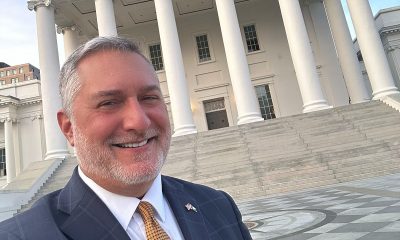
 Virginia3 days ago
Virginia3 days agoYoungkin calls on gay Va. GOP LG candidate to exit race over alleged ‘porn’ scandal
-
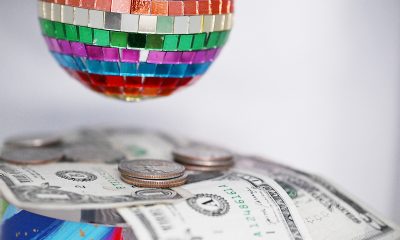
 Commentary5 days ago
Commentary5 days agoA conversation about queers and class
-

 Kenya5 days ago
Kenya5 days agoKenya Red Cross-owned hotel to host anti-LGBTQ conference
-

 Opinions4 days ago
Opinions4 days agoNavigating employer-sponsored health insurance, care

